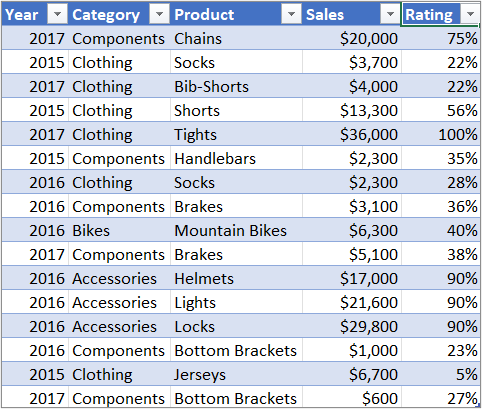

Now, sort the products by descending order of sales – See this:.Use product as the row label & sales as the value for pivot table.Select your data & insert a pivot table ( tutorial here).But since you hate clutter (and love Coyote, your lone customer), you want to show the top 10 products by sales & orders and give an option to drill down if someone is interested. and you want to show the performance of your products in a dashboard. Lets assume you are the owner of ACME inc. Today we will learn an interesting technique to do this in Excel. Showing Top 10 (or bottom 10) lists in a dashboard is a good way to achieve this (see below). In this case, the pivot table (and pivot chart) shows only the data for Missouri for the months of January through March.A good dashboard must show important information at a glance and provide option to drill down for details. Two Slicers are used to filter the data (by state and by month). To display multiple values, press Ctrl while you click the buttons in a Slicer.įigure 35.21 shows a pivot table and a pivot chart. To use a Slicer to filter data in a pivot table, just click a button. To remove the effects of filtering by a particular Slicer, click the icon in the Slicer’s upper-right corner. Slicers can be moved and resized, and you can change the look.

Place a check mark next to the Slicers you want, and then click OK. The Insert Slicers dialog box appears, with a list of all fields in the pivot table. To add one or more Slicers to a worksheet, start by selecting any cell in a pivot table. Using Slicers to filter the data displayed in a pivot table. Slicers can also be used to create an attractive and easy-to-use interactive “dashboard.”
#EXCEL PIVOT CHART EXPENSES HOW TO#
The same type of filtering can be accomplished by using the field labels in the pivot table, but Slicers are intended for those who might not understand how to filter data in a pivot table. In this case, the pivot table is displaying data for New customers, opened by tellers at the Westside branch. Each Slicer represents a particular field. Figure 35.20 shows a pivot table with three Slicers. Filtering Pivot Tables with SlicersĪ Slicer is an interactive control that makes it easy to filter data in a pivot table.

The companion CD-ROM contains a workbook, reverse pivot.xlsm, which has a macro that will convert any two-way summary table into a three-column normalized table. And, you can create a pivot table from this transformed table. This type of table is useful because it can be sorted and manipulated in other ways. In other words, every value in the original summary table gets converted to a row, which also contains the region name and month. Column G:I shows part of a 48-row table that was derived from the summary table. Notice that this summary table is similar to a pivot table. In the figure here, range A1:E13 contains a summary table with 48 data points.

But what if you want to perform the opposite operation? Often, you may have a two-way summary table, and it would be convenient if the data were in the form of a list. The Excel Pivot Table feature creates a summary table from a list.


 0 kommentar(er)
0 kommentar(er)
